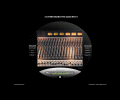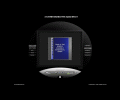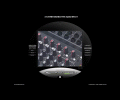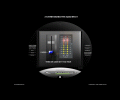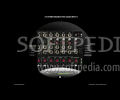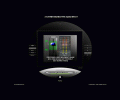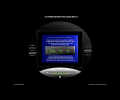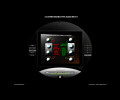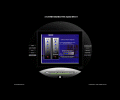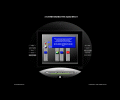It's common knowledge that any kind of audio we hear by means of TV, radio, net broadcasting, concerts and such like is "mastered" by some wise guys. Sounds aren't that good by themselves, except for a troubadour's guitar under the balcony of his betrothed or the lonely flute-notes of a shepherd lost amidst mountain slopes.
The urban, modern sound needs something more as it is now twisted and morphed in infinite shapes, amplified to the power of thousands of thunders and set to roam the entire world. This sound needs its own tamers: the sound engineers. As you have already guessed, I hope, this new kind of engineering isn't called so just because it needed a name: it's a hard, very precise work, most of the time a very soliciting job, often with many obstacles and troubles and also with nice and comforting rewards.
There are sound engineering colleges, training courses and by now several cubic meters of manuals have been already written on the issue. Sound engineering means so much more then rotating "some buttons" over a big table-like device as some might unfortunately think or unwinding "some cables" to "some speakers". From the simple church sound engineer to the rock band one and further to the immense multimedia shows we see at major sports and even business events, a big responsibility burdens the shoulders of those in charge on making things sound OK.
What we like so much as we listen to our favorite artist's new CD has been hard-worked by the studio sound engineers: each strange special audio effect that pleases our ears means at least tens of minutes of careful work and button-tweaking. Each whispering breath of your favorite singer captured on CD has been put there after some guys have done their best bent on the mixing consoles. You and even the artists owe them recognition and maybe a "thanks" for it's them who make things sound as they do.
This article's center point, the "Understanding the Audio Mixer" course is intended for the future sound engineers, for those who make their first steps in the really magical world of audio production. Be them band sound engineers, church sound operators, newbie amateurs or even slightly advanced users of sound reinforcement gear, the Understanding the Audio Mixer will be a good companion and an excellent source of knowledge.
The Looks
It is the first time I get the chance to review such material and I really can't tell for sure whether to call it "an advanced e-book" or an audio-video-photo sound engineering course. Nevertheless, it looks very good: professional and at the same time very easy to understand for those who get in contact with the mixing console for the very first time.
The whole idea is like an applet the size of your screen, totally black, with videos or pictures played in the center and the chapter-, feature- and playback-controls on the sides. Commanded by means of neatly-designed rounded buttons of the flash-type, the Understanding the Audio Mixer's interface induces a comforting feeling of warm school-like familiarity. The coloring is rather sober: it is clear that the developers of this software thought very well about the point where attention should be drawn; rather than going for a bright and colorful GUI, they opted for an almost dull one so the "pupil" won't be distracted.
The general operating routines are as easy as can be. Pushing a button immediately changes the chapter you are in, but it also can switch the features the Understanding the Audio Mixer is speaking about. Technically, Understanding the Audio Mixer can be seen as a very special and dedicated media player (it also has the proper controls) which only plays the same data any time you need it to.
Overall, this training-program is a very easy and also quick way to get familiarized to "which does what" when it comes to sound engineering.
The Features
I happened to get my hands on the demo version of the Understanding the Audio Mixer so I won't be able to account for everything the registered version has to say. Nevertheless, what this demo version presents is just the perfect info for a newbie; even for an advanced "sound-man" this course can be of good use. Especially if he is the intuitive-type: the Understanding the Audio Mixer will explain things theoretically and simultaneously, it will visually depict what goes where and why.
And this is the Understanding the Audio Mixer's strongest point: is shows you a lot of video AND it tells you about the things you see. This combination between visual and audio explanation is widely-accepted as being the best way to transmit information, especially if we're talking about educational purposes.
I hope you won't mind if I'll skip the details on what Understanding the Audio Mixer speaks about; as a matter of fact it's rather up to you to check things out and learn the basics on mixing consoles! One thing I'll say though: even for me, after all these years spent on stage or behind the mixers, the Understanding the Audio Mixer was something I've watched with pleasure, just knowing the things it was telling about but - at the same time - seeing them presented in a very clear and easily-understandable manner.
This is one thing that matters most and it's just great this software has accomplished to explain the professional stuff in terms which will easily be understood by the novices in the field, therefore capturing their interest and not setting them back. Exactly like a good teacher which reaches to the heart of its students, the Understanding the Audio Mixer has also made me follow its entire content as if I were also a student.
From the less then basic things - such as describing the generic appearance of the mixing console - and then passing to more complicated stuff - such as channel-grouping and bus-handling -, this software is able to educate the inexperienced up to a level where no matter if in front of a small, 4-channel mixer or a huge 52-channel, 8-bus and so on console, he/she will remain calm, knowing it's all just a job and no "magic" is required to make things work. As always, when it comes to audio production, magic is only in the producer's ears.
The Good
It's very nice to see that extensive courses on sound engineering are becoming available this way, in the form of downloadable courses of enhanced e-books. The Understanding the Audio Mixer takes you from the very point where all things begin and easily and gradually teaches you everything you need to know on the topic.
The Bad
I haven't spotted anything really bad; maybe the spacebar-usage could be a bit improved so no additional mouse clicks would be needed. Anyway, that's not a serious flaw whatsoever.
The Truth
Do you want to become a professional or even a better sound engineer? You don't have a clue on what this is all about? The Understanding the Audio Mixer is definitely one of the first steps on your road: an absolute must for beginners at an unbelievable price. "Go get it before the current song ends!"
Here you have some pictures of how the Understanding the Audio Mixer looks like:
 14 DAY TRIAL //
14 DAY TRIAL // 